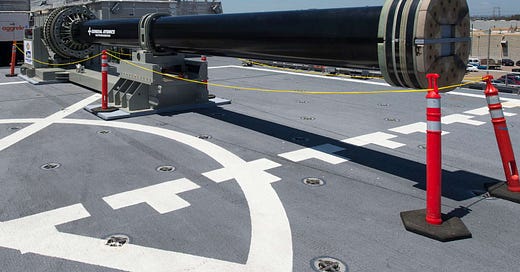The 14 Critical Technology Areas for United States' National Security in 2023
from the Office of the Undersecretary of Defense for Research and Engineering
The Office of the Undersecretary of Defense for Research and Engineering has identified 14 critical technology areas vital to maintaining the United States' national security, grouped into three categories.
While there is much convergence across these categories, the groupings represent the broad and different approaches that are required to advance technologies crucial to the Department.
Seed Areas of Emerging Opportunity
Biotechnology
From fighting global pandemics and avoiding surprises to reducing logistics and sustainment costs and increasing energy efficiency, biotechnology can help change the way the Department conducts missions, performs in contested logistics environments, and adapts to major global changes.
Quantum Science
Defense applications include atomic clocks, quantum sensors, quantum computing, and quantum networks. Quantum science promises to enable leap-ahead capabilities. Quantum computing can provide unprecedented computational speeds and help solve the Department's hardest analytical problems. Quantum sensors promise the ability to provide unprecedented accuracy in position, navigation, and timing. From more accurate information to faster decision making, to significantly stronger encryption capabilities, quantum science has the promise to deliver cutting-edge technology.
Future Generation Wireless Technology (FutureG)
As Fifth Generation (5G) wireless technology is adopted and provides building blocks for capability, the DoD will also look to FutureG for leap-ahead technologies to lead in creating future standards. The Department will invest in FutureG technology development to lay the groundwork for continued United States leadership in information technology, which is vital for maintaining our economic and national security.
Advanced Materials
Materials that have higher strength, lighter weight, higher efficiency, and can handle more extreme temperatures will have the potential to better protect our service members and enhance their ability to accomplish their missions.
Effective Adoption Areas
Trusted AI and Autonomy
Machine learning is an engineering subfield of AI that trains software models using example data, simulations, or real-world experiences rather than by direct programming or coding. Autonomy is the engineering discipline that expands robots' abilities to perform tasks while limiting the need for human interaction. AI holds tremendous promise to improve the ability and function of nearly all systems and operations. Trusted AI with trusted autonomous systems are imperative to dominate future conflicts. As AI, machine learning, and autonomous operations continue to mature, the DoD will focus on evidence-based AI-assurance and enabling operational effectiveness.
Integrated Network Systems-of-Systems
Integrated Network Systems-of-Systems capability must enable engagements by any sensor and shooter, with the ability to integrate disparate systems. An interoperable network that leverages emerging capabilities across the electromagnetic spectrum such as 5G, software defined networking and radios, and modern information exchange techniques will allow the Department to better integrate many diverse mission systems and provide fully networked command, control, and communication that is capable, resilient, and secure.
Microelectronics
Virtually every military and commercial system relies on microelectronics. Diminishing microelectronics manufacturing in the United States and supply chain concerns have highlighted national economic and security risks. Working closely with industry, academia, and across the Government, the Department is addressing the need for secure microelectronics sources and will leverage state-of-the-art commercial development and production for defense microelectronic solutions.
Space Technology
With rising threats and increasing dependence on space-based systems, the Department's space strategy must shift away from exquisite satellites to a more robust and proliferated architecture. Novel space technologies are necessary to enable resilient cross-domain operations. The space strategy must incorporate technologies that enhance the Department's adaptive and reconfigurable capabilities in space situational awareness, space control, communication path diversity, on-orbit processing, and autonomy.
Renewable Energy Generation and Storage
Renewable energy generation and storage promises to decrease warfighter vulnerability and deliver new operational capabilities for the Department. From more efficient batteries to diversifying energy sources and reduced fuel transportation risks, renewable energy generation and storage will add resilience and flexibility in a contested logistics environment.
Advanced Computing and Software
The Department must rapidly modernize its legacy software systems with resilient, affordable, and assured new software that has been designed, developed, and tested using processes that establish confidence in its performance. The Department must migrate to a Development-Security-Operations (DevSecOps) approach in its software development and evolve to a model of continuous development, continuous test, and continuous delivery. The Department must leverage modular open system architecture approaches to isolate hardware from software and enable rapid upgrades to secure processors.
Human-Machine Interfaces
Rapid advancements in this technology will have a multitude of benefits for our service members. Highly immersive realistic training environments provide real-time feedback to enhance warfighter performance. Intuitive 5 interactive human-machine interfaces enable rapid mission planning and mission command by providing a common operational picture to geographically distributed operations.





